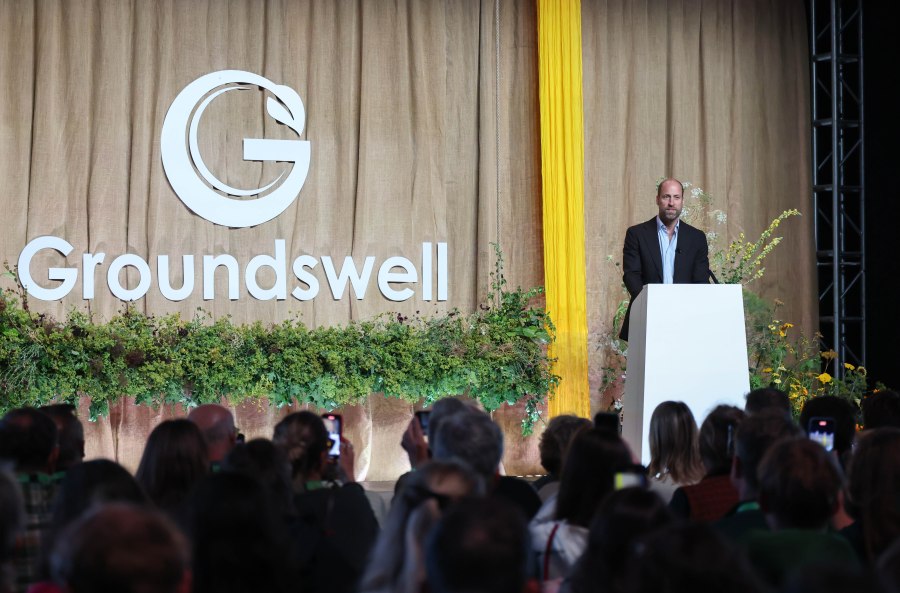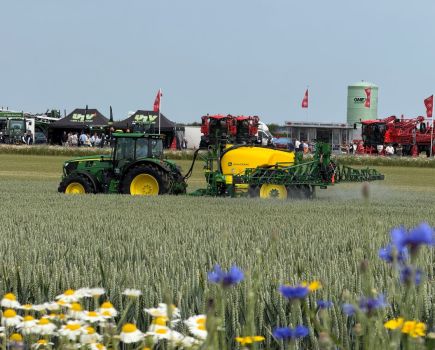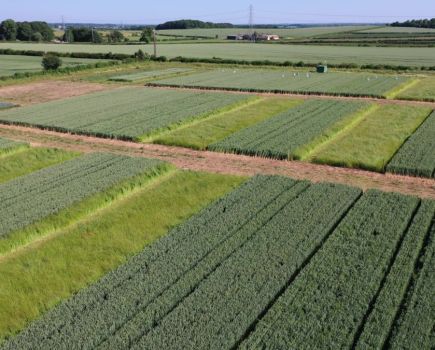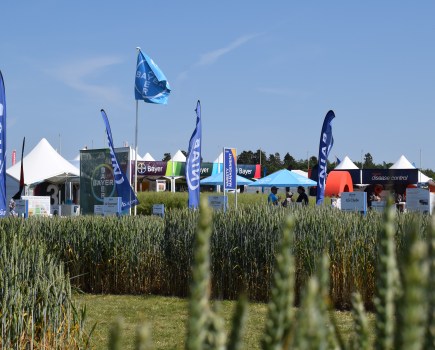Groundswell has long been renowned for attracting high calibre speakers to its bill, but this year the guest list accelerated the event to a whole new ‘royal’ level. CPM took to the session tents to absorb the expertise.
“Regenerative farming offers a hopeful path forward, a way of working with nature not against it.” HRH THE PRINCE OF WALES
By Janine Adamson and Melanie Jenkins
Even before the mysterious special guest at this year’s Groundwell festival was unveiled, the line up, while perhaps quite hefty, was already impressive in its own right. For one, it included multiple appearances from legendary pioneer of regenerative farming, Gabe Brown.
But even so, a surprise was waiting among the glamping tents and knowledge-thirsty farmers – none other than His Royal Highness The Prince of Wales. Coining himself ‘the warm-up act’ for Gabe, Prince William addressed attendees with rousing commentary which highlighted the importance of the regen movement.
And while this isn’t the first time he’s popped up at the show – having also walked the festival’s fields in 2024 – this was his maiden voyage onto the stage, before spending considerable time meeting and greeting those in attendance. “Last year I was uplifted by the sense of mission, the willingness to share knowledge and the innovation throughout the Groundswell community,” he said.
“This is a broad church of actors who shape our landscape, put food on our tables and have a central role in combatting the climate and nature emergencies. Farming is not simply the act of growing food; it’s much bigger than that – it’s the stewardship of the land, the health of our soils, the purity of our water and resilience of our rural society, in harmony with nature.”
He stated that a change in climate system and unpredictable weather patterns are exposing weaknesses in conventional thinking, as are the economic pressures of input costs and volatile markets.
“It’s become clear that we need a different approach; regenerative farming offers a hopeful path forward, a way of working with nature not against it. It’s not a single method or dogma, but a mindset rooted in curiosity, observation, community and growth.”
Prince William stressed that the industry must work harder to ensure society supports those who are taking ‘bold steps’ toward regenerative practices. “Retailers, food manufacturers and processors have a vital role too in valuing quality and provenance, shortening supply chains, and telling the stories of the food we eat.
“And as consumers, we must re-educate ourselves on what we eat, where it comes from and the true cost of its production. For the farmers here today I offer my respect and encouragement – you are at the heart of this transformation.”
With the crowd suitably ‘warm’, Gabe joined the stage to deliver his keynote presentation entitled ‘What is all this talk about regenerative agriculture?’. A highly prominent figure in the regen world, Gabe is widely commended for his transformation of Brown’s Ranch – a 2025ha farm near Bismarck in North Dakota.
Sharing his story with the audience in the Big Top Tent, Gabe said that despite learning a conventional approach from his father-in-law who ‘loved to till’, he began to question this approach to farming.
This led to Gabe selling all of his tillage equipment to go full force no-till. However, after a few challenging years of crop losses due to hail and weather extremes, Gabe said things were looking dire and he had to find a way to get out of debt.
“At the same time I was beginning to see some changes occurring. Before, we’d never had an earthworm in our fields but they were starting to appear, as were pollinators and beneficial insects, and birds. Wildlife was becoming much more abundant and water was starting to infiltrate our soils.
“I remember learning from my father-in-law that in early spring we’d go out discing because we were trying to dry the fields out so we could get in and seed. But by July we were on our knees praying for rain; it didn’t make sense to me.
“So instead, I was starting to see water infiltrating and my soils were beginning to look like chocolate cake and changing colour – this all occurred during those four years. I really began to realise that I’d degraded my ecosystem yet nature was working and we were starting to get help back into the system,” explained Gabe.
He said he wanted to impress on the Groundswell crowd that in regenerative agriculture, it doesn’t take decades to make a difference. “The change can be rapid if we open our eyes and observe. That’s the challenge I want to put forward for you today – change the way you see things.”
According to Gabe, as long as there’s some soil, land can be moved down the regenerative path and it’s certainly not difficult. He said during his journey, he’d realised his management had been degrading the soil. “I wasn’t being a good steward of the land.
“It was then that I knew I had to become a student again. Despite several college degrees, not once in those classes had I been taught how soil aggregate is formed or how biology drives the natural nutrient cycle.
“That’s the most difficult thing we have to do to change the production system – farmers can’t implement what they don’t understand.”
Earlier in the day, a panel discussed the land use framework and how it could be used to power change in farming and nature. Featuring Wildfarmed’s Andy Cato, NFU’s Tom Bradshaw and Dustin Benton of Forefront Advisors, it explored what government should be considering when devising policy.
Andy said while data is critical in developing the framework and measuring farm outcomes, the situation goes beyond that. “It’s broadly acceptable to chop down a forest to build a railway line, and broadly unacceptable to buy farmland back to plant a forest; why?
“It’s because we’re asking people to leave cultures, callings and deep-seated traditions. So framing this as a collective sense of mission and purpose – after all no species survives the death of its ecosystem – is really important.”
Tom added that considering culture and heritage is vital. “If you don’t have a community at the heart of those landscapes, what happens over time is you lose the skills and the ability to react and respond.
“We have to put a real value on culture and heritage. This doesn’t mean the landscape can’t change, but making sure people are there at the heart is absolutely essential.”
This article was taken from the latest issue of CPM. Read the article in full here.
For more articles like this, subscribe here.
Sign up for Crop Production Magazine’s FREE e-newsletter here.




